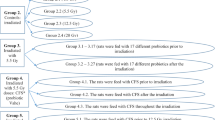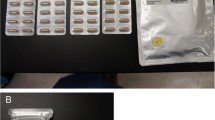Abstract
During space flight, the astronaut’s body is continuously exposed to various stress factors which can have a negative impact on the health and working capacity. The yeast S. boulardii has pronounced probiotic, immunostimulating, anti-inflammatory, antitoxic properties that contribute to the rapid restoration of normal intestinal microbiota and the destruction of pathogenic microorganisms at an early stage. The aim of this work was to study the cell viability and mutability of probiotic Saccharomyces boulardii strains under the action of high-energy protons in doses of 5–20 Gy. Experiments demonstrated normal growth at 37°C, radioresistance and low mutation level of probiotic strains. So, preparations of S. boulardii are perspective for solution of health problems of astronauts and for study their probiotic and radioprotective properties during space flight.



Similar content being viewed by others
REFERENCES
M. Durante, “Space radiation protection: Destination Mars,” Life Sci. Space Res. (Amsterdam) 1, 2–9 (2014).
I. B. Ushakov, “Stagnation of modern space medicine: Symptoms, diagnosis and treatment options,” Med. Extr. Sit. 20, 42–47 (2018).
V. V. Uyba, I. B. Ushakov, and A. O. Sapetskiy, “Medical and biological risks associated with long-distance space flights,” Med. Extreme Situat. 59, 43–64 (2017).
V. K. Ilyin, N. A. Usanova, D. V. Komissarova, et al., “Combined use of fermentation drinks based on saccharomycetes and probiotic and autoprobiotic preparations to ensure the normalization of human microflora in an isolation experiment (SIRIUS-18/19),” Aerospace Environ. Med. 54, 49–53 (2020).
V. K. Ilyin, A. N. Suvorov, N. V. Kiryukhina, et al., “Autoprobiotics as a means of preventing infectious and inflammatory diseases in humans in an artificial environment,” Bull. Russ. Acad. Med. Sci. 68, 56–62 (2013).
M. L. Palma, D. Zamith-Mira, F. S. Martins, et al., “Probiotic Saccharomyces cerevisiae strains as biotherapeutic tools: Is there room for improvement?,” Appl. Microbiol. Biotechnol. 99, 6563–70 (2015).
H. Stier and S. C. Bischoff, “Saccharomyces boulardii CNCM I-745 beeinflusst das darmassoziierte Immunsystem,” MMW Fortschr. Med. 159, 1–6 (2017).
I. Khatri, R. Tomar, K. Ganesan, et al., “Complete genome sequence and comparative genomics of the probiotic yeast Saccharomyces boulardii,” Sci. Rep. 7, 371 (2017).
Author information
Authors and Affiliations
Corresponding author
Ethics declarations
The authors declare that they have no conflicts of interest.
Rights and permissions
About this article
Cite this article
Zhuchkina, N.I., Kokoreva, A.N., Elizarova, V.S. et al. Possible Applications of Saccharomyces boulardii in Space Medicine. Phys. Part. Nuclei Lett. 19, 306–308 (2022). https://doi.org/10.1134/S1547477122030219
Received:
Revised:
Accepted:
Published:
Issue Date:
DOI: https://doi.org/10.1134/S1547477122030219




